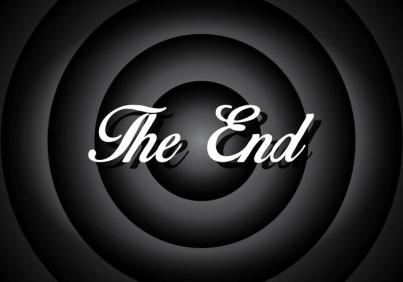Eighty five thousand words in, with a plan that looked OK for a while and has now been changed countless times, I’m still unsure how to end the story. I’ve been here here many times before, six times before in fact, once for each of my previous novels. Endings are the bane of my life.
Depending on the particular genre you have in mind, the protocols around endings are usually quite clear. Courtroom dramas end with a verdict, psychological thrillers with a twist. Generally speaking, classic crime and police procedurals are supposed to end with the baddies brought to justice, so that readers feel that satisfactory closure has been reached and all is well with the world. So where does that leave me?
Perhaps the problem lies in the fact that I’ve never been keen on knowing my genre, or sub-genre, and sticking to it. Or maybe it’s the state of ‘existential angst’ that seems to surround me at present, looking at the political debacle here in the UK and the ghastly POTUS across the pond. For whatever reason, I’m uncomfortable with tidy endings. I want to leave my story ambivalent, uncertain, compromised by the realities of human nature and the vagaries of the legal process.
Leave it, I said to myself, there’s no rush. Do all your edits on what you’ve got so far, and eventually the last thousand words will come to you. That was last week. This week the deadline for getting the final draft to the editor is that bit closer, and my ‘hurry up’ habit is nagging away even more loudly than usual. I have a holiday coming: do I definitely finish off before the holiday starts, or take the laptop with me and hope that distance and a change of routine will help the last decision? My holiday companion is counselling delay, and perhaps he will be a useful sounding board for the choices I face.
However much time I have, my instinct tips towards ambivalence, and that’s not just because I’m setting the reader up for a sequel. I really believe that the reader should be left with a question, not an answer.

 From pantomime onwards, everyone enjoys booing the villain and seeing her/his downfall, and the same is true of some modern psychological thrillers so that the fear can be cranked up as the ‘goodie’ (or ‘less baddie’) is faced with an implacable foe. Sometimes it’s their very badness that makes the character entertaining: the Devil in Milton’s ‘Paradise Lost’ is probably the most interesting being in the work. But I still prefer to introduce some nuances. Weakness in the villain may produce a lower level of fright, but it can add to the tension in more subtle ways.
From pantomime onwards, everyone enjoys booing the villain and seeing her/his downfall, and the same is true of some modern psychological thrillers so that the fear can be cranked up as the ‘goodie’ (or ‘less baddie’) is faced with an implacable foe. Sometimes it’s their very badness that makes the character entertaining: the Devil in Milton’s ‘Paradise Lost’ is probably the most interesting being in the work. But I still prefer to introduce some nuances. Weakness in the villain may produce a lower level of fright, but it can add to the tension in more subtle ways.